Negative thoughts can sneak in when we least expect them. A missed deadline, a misunderstanding, or simply a stressful day can quickly lead to self-doubt, fear, or frustration. While occasional negative thinking is part of being human, persistent patterns of these thoughts can begin to affect our mental health and overall outlook.
Understanding why we think this way and more importantly, how to change it can help us feel more in control of our emotions and behaviours. In this article, we explore practical ways to identify and challenge negative thinking, with tools that support a healthier, more balanced mindset.
What Causes Negative Thinking?
Negative thinking often stems from cognitive distortions automatic, irrational thought patterns that skew the way we perceive ourselves, others, or situations. These distortions can seem logical or even helpful, but over time, they can increase feelings of anxiety, low mood and stress.
When these thought patterns become routine, they may:
- Distort how we see ourselves
- Lead to false assumptions about others
- Trigger strong emotional reactions
- Contribute to symptoms of anxiety or depression
The good news is: once you learn to recognise them, you can challenge and reframe them.
Common Types of Cognitive Distortions
To stop negative thinking, it helps to know what kinds of thought patterns to look out for. These include:
- All-or-nothing thinking (e.g., “I always fail.”)
- Overgeneralisation (e.g., “This always happens to me.”)
- Catastrophising (e.g., “Everything is going to go wrong.”)
- Mind-reading (e.g., “They must think I’m incompetent.”)
- “Should” statements (e.g., “I should be doing more.”)
These patterns can feel convincing but they often lack evidence.
Practical Tips to Shift Negative Thinking
Start by Noticing Your Thoughts
Negative thinking can become so automatic that we hardly notice it. To break the cycle, pause and check in with yourself during the day. Ask:
- What am I thinking right now?
- Is this thought helpful or harmful?
- Am I feeling stressed, tense, or anxious for no clear reason?
Keeping a mood and thought log may help you notice patterns and triggers.
Identify Your Common Distortions
Begin journaling your most recurring thoughts. Pay attention to:
- When and where the thought occurred
- What emotion it triggered
- Whether similar thoughts come up in similar situations
After a few days, group your thoughts by theme. You will likely spot repeated patterns, such as always assuming the worst or labelling yourself harshly.
Switch Perspectives
Imagine someone said your thought out loud to a friend or loved one. How would you respond?
For instance, if you think, “I always mess up presentations,” consider how you would challenge that if someone said it about your best friend. This mental shift helps reduce self-criticism and encourages more balanced thinking.
Look at the Evidence
Challenge irrational thoughts by weighing the evidence:
- What real facts support this thought?
- What evidence contradicts it?
- What might a neutral observer say?
For example, instead of believing, “I’m no good at my job,” recall positive feedback, achievements, or moments of success.
Break Down the Labels
If you catch yourself using labels like “failure” or “loser,” stop and consider the bigger picture. One setback does not define your entire self. Reframe with statements like:
- “I made a mistake, but I have learned from it.”
- “That moment did not go well, but it does not define me.”
Avoid Generalising from One Incident
Instead of thinking, “This always happens to me,” find examples of when things went differently. Use the “Opposite Threes” technique:
If you think, “I never do anything right,” identify three specific times when you did do something well. This helps retrain your brain to see exceptions, not just patterns.
Stop Speculating
Mind-reading rarely leads to clarity. Instead of assuming what others are thinking, check in with them. Ask open, non-confrontational questions if you are unsure. You will often find your assumptions are not accurate and that opens the door to healthier relationships and clearer thinking.
Reframe “Should” Statements
“Shoulds” can create pressure and guilt. Try replacing them with more flexible language:
- Instead of “I should exercise more,” say “I’d like to be more active.”
- Instead of “They should be more supportive,” say “It would be helpful if they were more supportive.”
This shift reduces internal pressure and promotes self-compassion.
Do a Cost-Benefit Analysis
Ask yourself: What does this thought cost me and what does it give me?
If a thought makes you anxious, less motivated, or more irritable, it may not be worth keeping. On the other hand, some negative thoughts might act as a form of self-protection or preparation but if they are not helping, they are likely doing harm.
When to Seek Support
While many people can manage cognitive distortions on their own, support from a qualified mental health professional can make a big difference especially if:
- Negative thinking affects your relationships or work
- You experience frequent low mood or anxiety
- You find it hard to shift unhelpful thoughts on your own
Cognitive Behavioural Therapy (CBT) is one of the most effective treatments for addressing negative thinking patterns. Therapists can guide you in recognising distortions, developing new perspectives and building skills to manage stress and emotional challenges.
Final Thoughts
Everyone experiences negative thinking from time to time. But when it becomes frequent, it can shape how you feel, behave and relate to others. Fortunately, by identifying and challenging distorted thoughts, you can start to shift your mindset and feel more in control.
With practice, reflection and support when needed, you can reduce the impact of negative thinking and improve your emotional wellbeing. At Lakes Family Medical Centre, we understand the important connection between mental and physical health. Our general practitioners can support your mental wellbeing, whether through regular check-ups, mental health care plans, or referrals to allied health professionals such as psychologists. We are here to help you take positive steps toward balanced health one thought at a time.
Learn more about The Lakes Family Medical Centre :



